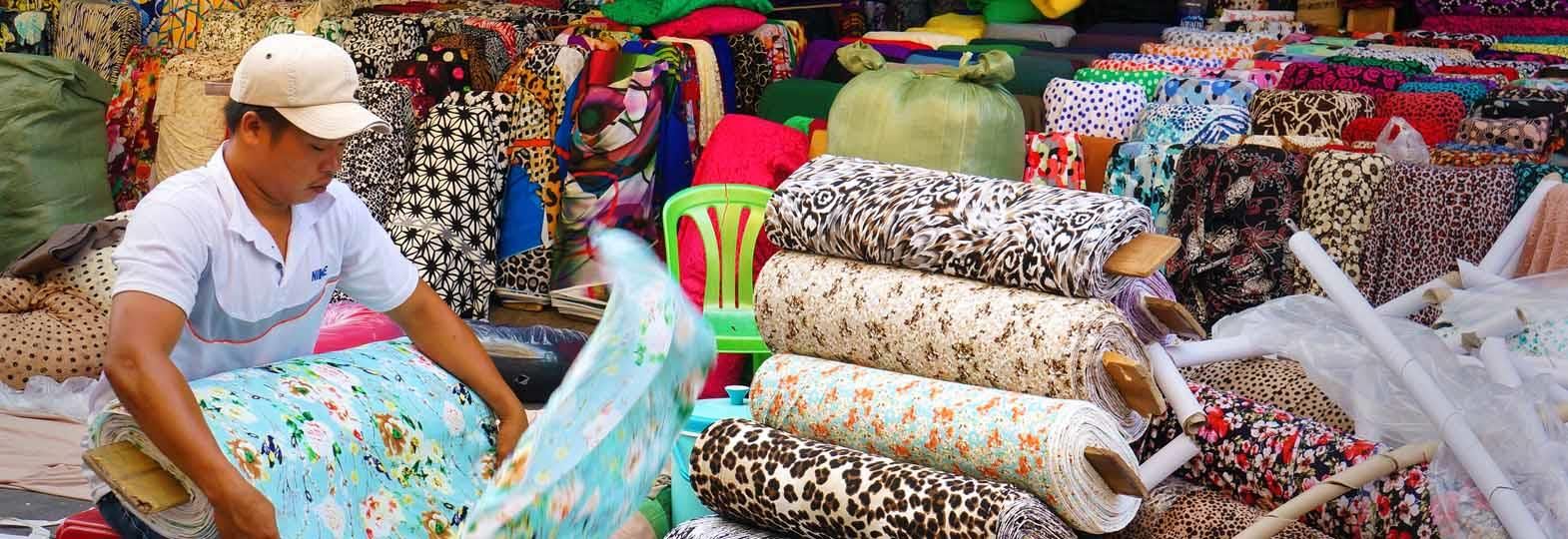There comes a time in every major exporting country when upstream suppliers call for localisation. This article discusses whether it will be a good idea for Vietnam to move towards manufacturing more of its fabric locally and thereby decreasing its import dependence.
Component localisation i.e., manufacturing locally, may make sense. For example, electronics is one of Vietnam’s most important export industries. Given the move towards trade weaponisation, investing in local component production is a prudent strategy. There may well come a time when the US and the EU will restrict imports of electronic products containing made-in-China components. Hence, moving towards local production may not only avoid future problems, but it will also resonate well with Vietnam’s major import customers.
What is true of electronics, however, is not true of garments, where the selection of trim products is often designated by the importer. This is not the moment to instruct Vietnam’s important customers that they may no longer specify which company should provide trim components.
On the other hand, fabric localisation is invariably a fool’s game, a trap for the unwary, from which there may be no escape.
There are two arguments for fabric localisation:
a. Fabric accounts for about 60 per cent of garment FOB price. So, replacing imported fabric with local fabric benefits everybody.
b. For the most part garment factories are permitted to import fabric for garment exports duty-free. Regrettably, much of those fabric imports finds their way into garments for local production, taking away business that legitimately should go to local textile mills.
Both these arguments are undeniably true. However, any benefits from localisation are far outweighed by the costs, particularly when we consider how localisation is to be achieved and more importantly who is to pay for what may well become a multibillion-dollar investment. There are two possibilities:
Alternative I: The Multibillion-Dollar Textile Industry Investment
Garment factories import fabric because there exists a problem with local fabric. This might be high price, low quality, or unreliable delivery. However, in almost all instances, factories import rather than going to domestic mills simply because the local mills do not produce the fabrics required by the importer.
To overcome the problem, somebody – the textile mills or the government – must put up the billions of dollars.
Here come the problems:
a. The money must be paid in advance of any return, i.e., if the local textile mill wants to sell something, the textile mill must first have something to sell.
b. Once the mill has built the necessary facilities, the mill must attract the customer to leave their existing supplier and move to the local mill. So, the local textile mill must offer something more than the customer’s current supplier, e.g., lower cost, better quality, more reliable delivery etc.
c. The local textile mill cannot expect its potential customer to throw out their existing supplier on day one. Indeed, the local mill must accept that it will require a number of years before it can become a major player in the domestic garment industry.
d. The customer for fabric is not the local garment factory, but rather the overseas garment importer. As a result, the mill must contact the customer located in London, New York etc to move orders from existing mills located in third party countries to Vietnam. WHY WOULD ANY IMPORTING CUSTOMER WHO CURRENTLY IS REDUCING THEIR GARMENT ORDERS WITH THE VIETNAM-BASED FACTORY WANT TO BECOME TRAPPED IN VIETNAM?
e. Most important! Before any company moves ahead with any substantial investment, that company must be sure that the market is sufficiently large to support the investment. This last problem is the underlying reason why investing billions solely to develop fabric production in Vietnam makes no sense unless the mill is relying on fabric exports.
Alternative II: Restrict Fabric Imports By Imposing Tariff And Non-Tariff Barriers
This of course is the only rational solution, if for no other reason than the capital investment approaches $0.
Here are the problems:
a. The current problem facing Vietnam is declining demand for its garment exports. At this time, any restrictions affecting fabric imports will reduce garment export demand further.
b. Far from resulting in a stronger textile industry, the results are invariably THE CAPTIVE CUSTOMER SYNDROME whereby the textile mill dictates price, quality, and delivery because the factory has no alternative source.
c. This in turn leads to higher levels of corruption as factories pay-off customs officials in order to close their eyes to illegal textile imports.
However, it will not be the first time that an upstream industry has tried to create an un-level playing field to benefit itself at the expense of its customers. India is but the most recent example.
Successful economies are based on a level-playing field. For example, China is home to the world’s largest textile industry. Nevertheless, it is one of the easiest places to import textiles. If you are an importer or a factory operating in China you will buy local fabric, provided the quality is good and the price competitive. If not, by all means import. This would be a good practice for Vietnam to follow.









Comments